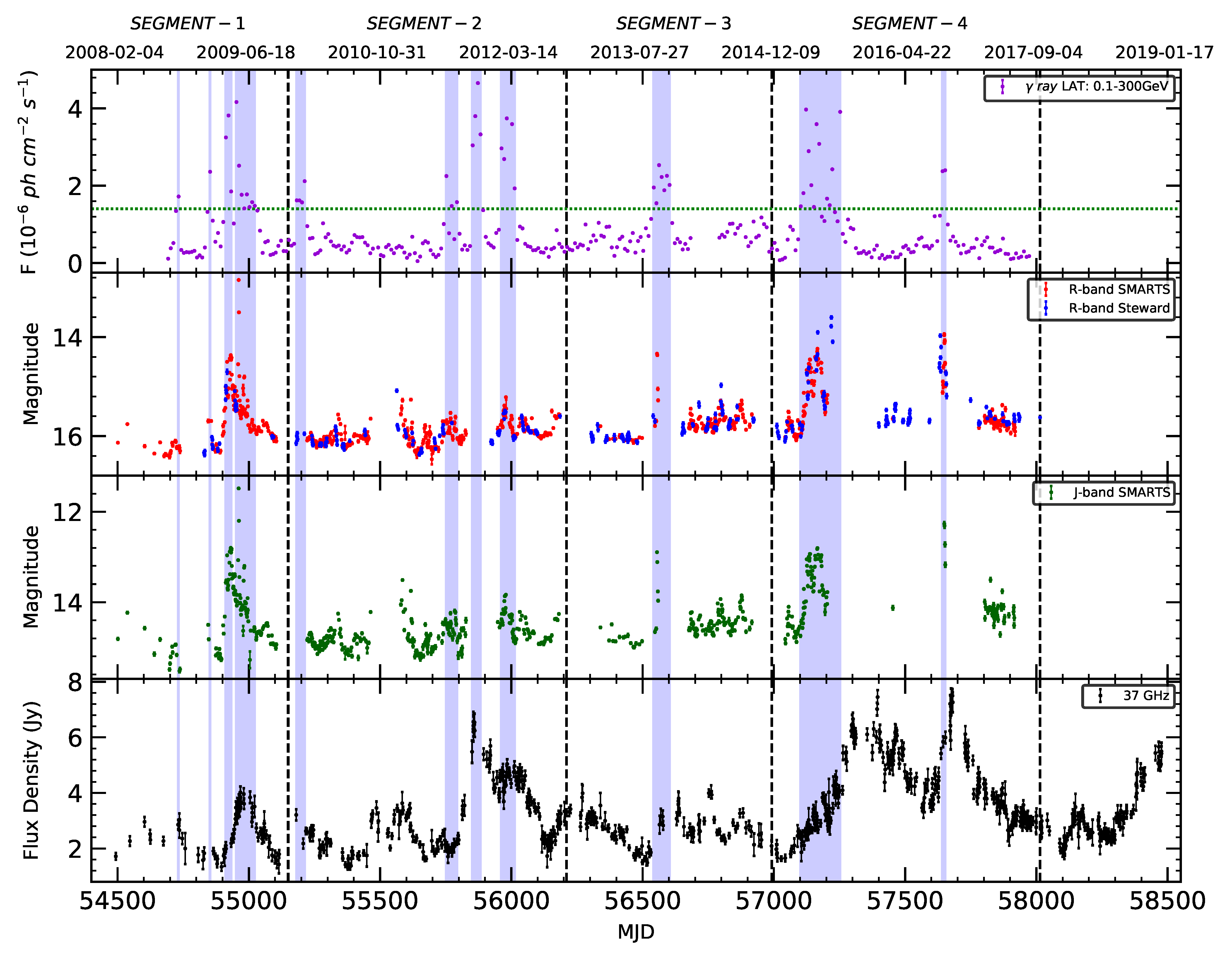

Researchers found correlations between multiband light curves of PKS 1510-089
Currently, very high-energy γ-rays have been detected in 67 BL Lac objects; very high-energy γ-rays have only been detected in only 9 flat-spectrum radio quasars (FSRQs). This is because there is less absorbing medium at the TeV energy level near the γ-ray radiation region of the BL Lac object. Moreover, due to the Klein-Nishina effect and strong absorption in the broad line region, the number of sources of very high-energy gamma rays that can be observed in FSRQ is very small. Therefore, the production mechanism of the observed γ photons and the location of the radiation zone have always been hot research topics for astronomers, and the study of multiband light curves is one of the most effective ways to analyze the physical structures and processes of such sources.
YUAN Qi, a doctoral student at Xinjiang Astronomical Observatory, Chinese Academy of Sciences, and her collaborators analyzed the correlation of the long-term multiband light curves of FSRQ PKS 1510-089, as well as the quasi-periodic oscillation characteristics of the radio band.
Relevant research results have been officially published in the American “Astrophysical Journal” (ApJ, 2023, 953(1):47)
In this study, the researchers collected multiband light curves from several astronomical observations with different instruments between 2008 and 2018. These include observations in the gamma-ray band conducted by the space-based Fermi Large Area Telescope, optical and near-infrared bands observation by the Small and Medium Aperture Telescope System and the Steward Observatory telescopes, and observations in the 37 GHz band by the Mets?hovi Radio Observatory's 13.7-meter radio telescope.
Using the Z-transform discrete correlation function (ZDCF) algorithm, the researchers analyzed the correlation and time delay between light curves in different bands. And they found the notable correlations of the light curves between γ-rays and optical-near infrared bands and that between optical and near-infrared bands, and the corresponding time delays were all smaller than the sampling interval.
Meanwhile, the researchers found the γ-ray and optical-near-infrared radiation are ahead of the radio radiation. In addition, for the radio radiation at the 37 GHz band, the researchers used the normalized Lomb-Scargle period diagram, the weighted wavelet Z-transform and the REDFIT technique to explore the light curve dominated by the undecomposed jet core and found a potential quasi-periodic period of about 1540 days.
The researchers suggested that the light variation is one of the main observational characteristics of AGN and should not be limited only to extreme jet-dominated objects such as blazars. Therefore, this analaysis can be applied to different AGN subtyeps for future studies.
Fig 1. Correlations between multiband light curves
Contact: YUAN Qi
Xinjiang Astronomical Observatory, Chinese Academy of Sciences
Email: yuanqi@xao.ac.cn
Article link: https://iopscience.iop.org/article/10.3847/1538-4357/acdd74/pdf
Attachment Download: